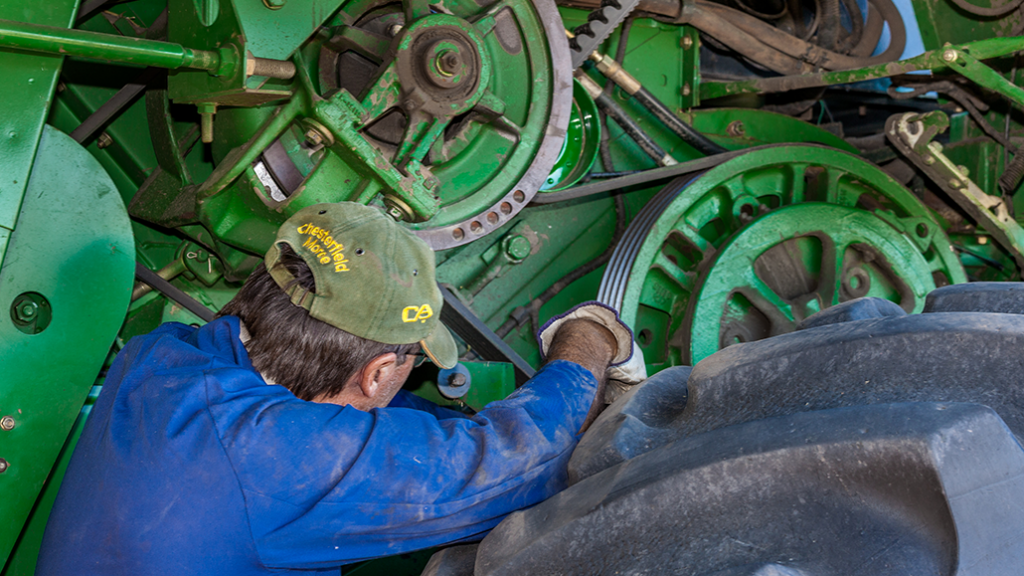Right to repair
A GLOBAL ISSUE

WHAT DOES ‘RIGHT TO REPAIR’ mean? The answer may depend on who you ask and where in the world you are.
Generally speaking, the right to repair refers to the right of individuals to make changes or fix technologies such as smartphones and farm machinery. In many cases, Original Equipment Manufacturers (OEM) have restricted access to key components or aspects of a technology.
In the agriculture sector and other industries — including hospitality and manufacturing — the issue revolves around a person’s ability to fix equipment when breakdowns occur, either by themselves or by those not certified by the original manufacturer. Two factors are involved — can equipment be fixed so as not to violate the warranty but still allow the operator to continue working, and will the fix make the operator or OEM legally liable if an accident occurs?
The latter question is particularly pertinent. The right to repair discussions have also included demands from some farmers and organizations (e.g. The Repair Association in the United States, which argues for complete and unfettered repair rights for purchased equipment) for the ability to modify rather than just fix electronic tools.
The movement has a patchwork-like appearance across North America, with different levels of government in Canada and the United States seeking to get ahead of perceived problems facing both the tech-consuming public and the agriculture industry. Political jurisdictions further afield feature a similar state of affairs, while the positions held by some companies also appear to be evolving.
CANADA
Right to repair legislation has appeared at both the federal and provincial levels in Canada. In Ontario, for example, a bill addressing the issue was voted down in 2019. A similar initiative is currently ongoing in the Quebec legislature.
While aspects of repair rights do fall under provincial jurisdiction, they are also tied to federal copyright laws. Thus, changes at the federal level are required to enshrine the ability of private citizens to access independent repair services or fix things themselves. This was part of the motivation behind MP Brian May’s introduction of a Private Member’s Bill to the House of Commons early in 2021. The bill aimed at amending Canada’s current legislation but was taken off the table because of the 2021 federal election.
Since then, Bill C-244 — An Act to amend the Copyright Act (diagnosis, maintenance and repair) — was introduced in the House of Commons on February 8, 2022, by MP Wilson Miao.
May says he “seconded MP Miao’s Bill and provided assistance when MP Miao was preparing to introduce it [because] Bill C-244 is identical in text” to his earlier Private Member’s Bill.
“I’m thrilled to see [my bill] live on in MP Miao’s Bill C-244 and look forward to future discussion in Parliament.”
As detailed in a 2021 interview, May’s original bill was described as a specific, highly targeted bill highlighting “just one single problem in the Copyright Act.”
“It’s not going to solve right to repair overnight, but it’s a key step in enabling provinces to be able to pass their own legislation and preventing the Copyright Act from making their efforts moot.”
UNITED STATES
Right to repair legislation has been featured in many state legislatures in America. A notable example comes from Nebraska, where a bill on the subject was debated on the House floor in early March 2022.
In the summer of 2021, U.S. President Joe Biden signed an executive order designed to “promote competition in the American economy.” Part of the order directs the Federal Trade Commission to limit the ability of OEMs to restrict repair access.
There has been activity in the Senate and Congress, including an agriculture-focused right to repair act submitted by Senator Jon Tester. As of March 2002, Tester’s act sits before the Senate’s Committee on Commerce, Science, and Transportation.
EUROPE
Right to repair movements have also cropped up in Europe, where the European Commission (the executive branch of the European Union) announced plans to create new rules.
As described in a policy briefing from the Commission, the right to repair may refer to different issues and situations: repair during the legal guarantee, the right to repair after the legal guarantee has expired, and the right for consumers to repair products themselves.
“Rates of repair depend on the type of a product, with the cost of repair being the most important reason consumers avoid repair. Research shows that consumers favour easily repaired products, but their willingness to pay for such products depends on the type of product and the way information on the reparability is presented to them,” reads the briefing.
“Currently, EU contract laws give consumers a right to have faulty products repaired during the legal guarantee, while the new generation of eco-design rules require the availability of spare parts for a certain time, at least for some products. Repair-related requirements are also present in the rules on the EU Ecolabel. The Commission is now planning a number of initiatives to improve repairability of products, including legislation on the right to repair, on empowering consumers for the green transition, a sustainable products initiative, design requirements for electronics, and measures making the broader economic context more favourable to repair.”
The United Kingdom has similarly adopted right-to-repair policies designed to benefit end consumers and reduce the environmental costs wrought by unnecessary disposal of what could otherwise be working technologies.
EQUIPMENT MANUFACTURER POLICIES
In the agricultural sector, equipment manufacturers have traditionally pushed back against some aspects of the right-to-repair movement, primarily because of the issues referenced at the beginning of this article. Legal challenges have risen, too. John Deere, for example, is currently facing a class-action lawsuit in Illinois over its alleged violations of antitrust laws.
There are indications some OEMs are looking to align aspects of their repair policies with the needs and wants of their customers.
John Deere has announced it will be enhancing the capabilities of existing diagnostic tools and expanding their availability. A press release published on March 21, 2022, says the company will “roll out an enhanced customer solution” in 2023. This will include a mobile device interface and the ability to download secure software updates directly to embedded controllers on select John Deere equipment with 4G connections.
The press release adds the company will, as of May 2022, expand its offerings by giving customers and independent repair shops in the U.S. the ability to purchase Customer Service ADVISOR directly through JohnDeereStore.com.
Luke Gakstatter, senior vice president for aftermarket and customer support, says, “customers with connectivity already receive proactive maintenance through over-the-air software updates and diagnostic code information available to their smartphone. The next step for us to digitize and enhance the repairability experience is to enable customers themselves to remotely download secure software updates to controllers.” •




















